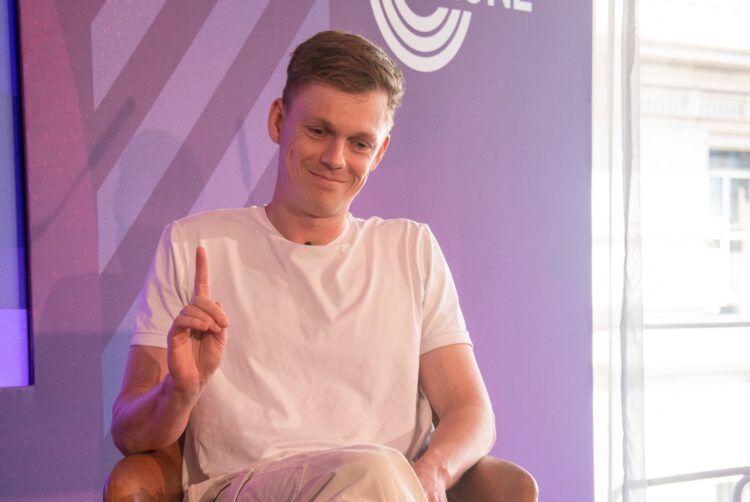‘Misaligned expectations’ between brands and influencers hamper creator economy

The Future of Brands 2025
There is a “pain point” around misaligned expectations between brands and the creators they employ for social media marketing, according to Luke Barnes, EMEA president of influencer marketing agency Influencer.
According to a survey of 500 global influencers conducted by the agency, creators report often feeling concerned over creative constraints, unrealistic deadlines and excessive content revisions required by brands.
The Creator Perspectives report also found that creators “doubt how much brands actually value their creativity”, perceiving brands to care more about driving reach and engagement than the quality of their work.
“Many of us in our industry spend hours and hours talking with brands and advertisers about how they should work with creators, how to maximise their investment in them or how to measure the return on that investment,” Barnes told a crowd at The Future of Brands in London last month. “But so rarely do we invite the creators themselves to contribute to that conversation. Which is kind of insane.”
The tension comes amid efforts to professionalise the creator economy. The global influencer marketing industry was worth an estimated $24bn in 2024, with some analysts expecting this figure to double by 2028. According to the Advertising Standards Authority (ASA), UK adspend on influencers more than tripled between 2019 and 2023.
Yet, according to Creator Perspectives, 88% of creators currently consider their social media efforts a “side hustle” rather than a full-time job. Even for “mega-star” creators, only a quarter (25%) were found to make content full time as their main source of income.
“It is still a hustle,” Barnes remarked.
Caspar Lee, an “OG YouTuber” and founder and chief vision officer of Influencer, suggested that it wasn’t necessarily a bad thing that most creators do the work part time and that it didn’t mean what they produce is unprofessional.
“The majority of creators we work with, they’re people that have a life beyond the content that they’re creating — and that’s what really makes them interesting,” he said, adding: “A professional creator to me is someone who shows up responsibly and does things in a timely manner.”
Watch the full conversation
That includes properly disclosing ads. Last week, the ASA found that just 57% of influencer ads are properly disclosed on Instagram and TikTok. While this figure is up from 35% in 2021, ASA senior compliance executive Ed Senior warned that this number needs to be higher.
“In a world where social media plays an increasingly significant role in our lives, it’s vital that people are able to tell what’s advertising and what’s not,” he said.
Earlier this week, Isba and the Influencer Marketing Trade Body (IMTB) announced a new wave of signatories to its Influencer Marketing Code of Conduct. The code, first launched in 2021, published its fourth iteration in November 2024.
It aims to aid the professionalisation of the creator economy through developing responsible marketing standards such as recommending brands carry out due diligence of creators, committing to publishing age-appropriate content and promoting zero-tolerance policies regarding hate speech.
New signatories include brands Allwyn, Asda, Bet365, Domino’s, John Lewis, Sainsbury’s and Estée Lauder, as well as agencies Influencer, VaynerMedia, Socially Powerful and Billion Dollar Boy.
Apart from the standards included in the code, Lee advised that brands must work to improve their relations with creators to get the best result.
“It’s really important as a brand to know that when you’re working with creators, you’re not just working with a click of the button of buying media. You’re working with real people who have schedules — not only around content, but also what they do with their lives,” he said.
While recognising it is “difficult” for brands to hand over creative freedom to creators given the potential risks, Lee added that it is important to allow creators to tailor content to their own popular patterns and to the communities they speak to.
That doesn’t necessarily require giving creators total creative licence. According to Barnes, just 21% of creators indicated they prefer complete creative control. Rather, a majority (58%) want to be given brand guidelines to follow.
He explained: “They don’t want a blank canvas. They want a map.”
Lee suggested that brands give examples of content they’d like to see creators emulate during the briefing process, with guidelines being useful not only to aid creative efforts but also because they avoid the need for a long revision process.
The best brands, he concluded, involve the creator as much as possible within broader marketing efforts.
“Try and share with the creator what you’re actually trying to achieve within the wider marketing angle,” he recommended. “Because creators want to know whether you’re after story clicks or brand uplift or [post] saves because you’re selling a product that isn’t an instant purchase.
“These things are important and it might sound boring when you’re writing it out in the brief, but we actually discovered that creators really care about this stuff.”
Over two-fifths of influencer ads fail to meet ASA disclosure standards




